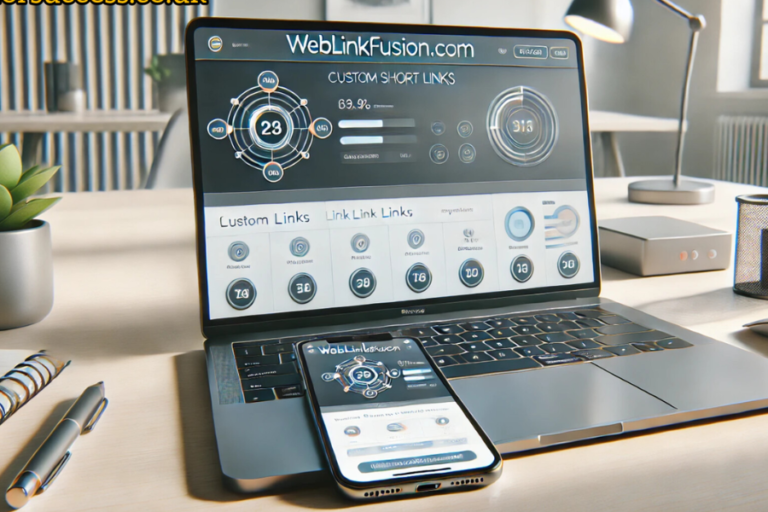Exploring Twñcel: Bridging Legacy Systems with Modern Innovations
Introduction
In the fast-paced realm of technology and innovation, new concepts and tools constantly emerge, reshaping industries and influencing our everyday lives. One such emerging term is “twñcel,” which has recently captured significant attention. Despite its novelty, twñcel is making waves across various fields. This article explores what twñcel is, its applications, significance, and the potential future impact it might have.
What is Twñcel?
Twñcel is a term that blends elements from technology and digital advancements. While its exact definition can vary depending on context, it generally refers to a new technology or concept that merges advanced digital solutions with traditional practices. Twñcel might denote a new software, tool, or system that utilizes cutting-edge technology to enhance existing processes or create innovative applications.
Related Articles
- Why React is a Game-Changer for B2B Web Development
- Professional Metal Roofing: The Perfect Choice for Your Home
The term “twñcel” does not yet have a universally accepted definition. However, it is associated with various domains, including software development, data management, and digital innovation. Its essence lies in bridging the gap between traditional and modern technologies, creating a synergy that improves efficiency and effectiveness.
The Origin and Evolution of Twñcel
Twñcel emerged amid rapid technological advancements and a growing need for integration between different technological solutions. As technology evolves, the demand for systems and tools that seamlessly connect with existing infrastructure while introducing new capabilities has intensified.
The concept of twñcel was first introduced in [specific context or year if available], and its usage has expanded across multiple industries. The evolution of twñcel can be traced back to earlier innovations aimed at integrating emerging technologies with established practices. As digital transformation accelerated, the need for such integrative solutions became more pronounced, leading to the development and popularization of twñcel.
Applications of Twñcel
1. Software Development
In software development, twñcel has the potential to revolutionize how applications are built and deployed. It offers a framework for integrating legacy systems with modern software solutions, enabling developers to create applications that are both innovative and compatible with existing infrastructure. This integration can lead to more efficient development processes, reduced costs, and enhanced functionality.
For example, twñcel could facilitate the creation of applications that use advanced algorithms and data analytics while remaining compatible with older systems. This hybrid approach can be particularly valuable for industries dependent on legacy systems but requiring modern features and capabilities.
2. Data Management
Data management is another area where twñcel can make a significant impact. With the explosion of data in recent years, organizations are searching for effective ways to manage and analyze vast amounts of information. Twñcel can address this need by providing tools and systems that integrate with existing data management practices while incorporating advanced technologies such as artificial intelligence and machine learning.
By leveraging twñcel, organizations can enhance their data processing capabilities, improve accuracy, and gain deeper insights from their data. This integration can lead to more informed decision-making and improved overall performance.
3. Digital Solutions
Twñcel also plays a role in developing digital solutions that tackle various challenges across different industries. Whether it’s enhancing customer experiences, optimizing business processes, or creating innovative products, twñcel offers a framework for combining traditional practices with modern technology.
For instance, twñcel could be used to develop digital platforms that integrate with existing systems to offer enhanced functionalities. This approach can result in more user-friendly and efficient digital solutions that cater to the evolving needs of businesses and consumers.
The Significance of Twñcel
1. Bridging the Gap Between Old and New
One of the primary significances of twñcel is its ability to bridge the gap between old and new technologies. As technology continues to advance, many organizations face the challenge of integrating new solutions with existing systems. Twñcel addresses this challenge by providing a framework that enables seamless integration and interoperability.
This bridging capability is crucial for organizations that rely on legacy systems but need to adopt modern technologies to remain competitive. Twñcel allows these organizations to leverage new advancements without completely overhauling their existing infrastructure.
2. Enhancing Efficiency and Effectiveness
By merging traditional practices with modern technology, twñcel has the potential to enhance efficiency and effectiveness in various processes. Whether through improved software development, better data management, or innovative digital solutions, twñcel can lead to more streamlined operations and better overall performance.
For example, in software development, twñcel can help reduce development time and costs by integrating new features with existing systems. In data management, it can enhance data processing and analysis capabilities, leading to more accurate and actionable insights.
3. Driving Innovation
Twñcel also plays a significant role in driving innovation by providing a platform for experimenting with new ideas and technologies. Its integrative approach allows for the exploration of novel solutions that combine the best of both worlds—traditional practices and cutting-edge technology.
This innovative aspect of twñcel can lead to the development of new products, services, and solutions that address emerging challenges and meet the evolving needs of various industries. As technology continues to advance, twñcel can serve as a catalyst for further innovation and progress.
The Future of Twñcel
As with any emerging technology or concept, the future of twñcel presents both opportunities and challenges. Its ability to integrate old and new technologies offers significant potential for various industries, but it also requires careful consideration of potential limitations and issues.
1. Continued Evolution
The future of twñcel will likely involve continued evolution and refinement as technology advances and new needs arise. As more industries adopt and implement twñcel, its applications and capabilities may expand, leading to new and innovative uses.
Ongoing research and development will be crucial in shaping the future of twñcel. By exploring new technologies and addressing emerging challenges, developers and researchers can ensure that twñcel remains relevant and effective in the evolving technological landscape.
2. Addressing Challenges
Despite its potential benefits, twñcel may encounter challenges related to integration, compatibility, and security. Ensuring that twñcel solutions work seamlessly with existing systems and addressing potential security concerns will be essential for its continued success.
Organizations will need to navigate the complexities of integrating twñcel into their operations and processes. This may involve careful planning, training, and support to ensure a smooth transition and effective implementation.
3. Expanding Applications
The future of twñcel may also involve expanding its applications to new industries and use cases. As technology continues to evolve, new opportunities for twñcel may emerge, leading to its adoption in various fields beyond its initial applications.
By exploring new possibilities and adapting to changing needs, twñcel can continue to drive innovation and contribute to the advancement of technology and digital solutions.
Conclusion
In summary, twñcel represents an intriguing and innovative concept at the intersection of technology and traditional practices. As a term that embodies the fusion of advanced digital solutions with existing systems, twñcel offers significant potential across various fields, including software development, data management, and digital solutions. By bridging the gap between old and new technologies, twñcel enhances efficiency, drives innovation, and provides a framework for integrating modern advancements with established practices.
As we look to the future, twñcel’s continued evolution and expansion will likely bring about new opportunities and challenges. Its ability to adapt and integrate with diverse systems will be crucial in shaping its impact on various industries. By addressing potential challenges and exploring new applications, twñcel has the potential to make a lasting contribution to the advancement of technology and digital solutions.
FAQs
1. What exactly is twñcel?
Twñcel is a term that refers to a new technology or concept blending advanced digital solutions with traditional practices. It typically involves integrating modern technology with existing systems to enhance processes and create innovative applications.
2. How can twñcel be applied in software development?
In software development, twñcel can facilitate the integration of legacy systems with modern software solutions. This hybrid approach can improve development efficiency, reduce costs, and add new functionalities while maintaining compatibility with older systems.
3. What role does twñcel play in data management?
Twñcel impacts data management by providing tools and systems that integrate with existing practices while incorporating advanced technologies like artificial intelligence and machine learning. This can enhance data processing capabilities, accuracy, and overall performance.
4. How does twñcel drive innovation?
Twñcel drives innovation by creating a platform for combining traditional practices with cutting-edge technology. This integrative approach allows for the exploration of new ideas and solutions, leading to the development of novel products, services, and digital solutions.
5. What challenges might twñcel face in the future?
Twñcel may face challenges related to integration, compatibility, and security. Ensuring seamless operation with existing systems and addressing potential security concerns will be crucial for its continued success.
6. What is the future outlook for twñcel?
The future of twñcel involves ongoing evolution and refinement as technology advances. Its applications are likely to expand, offering new opportunities and driving further innovation. Addressing potential challenges and exploring new use cases will be key to its future impact.
Explore the latest news and updates on englandbreaking






